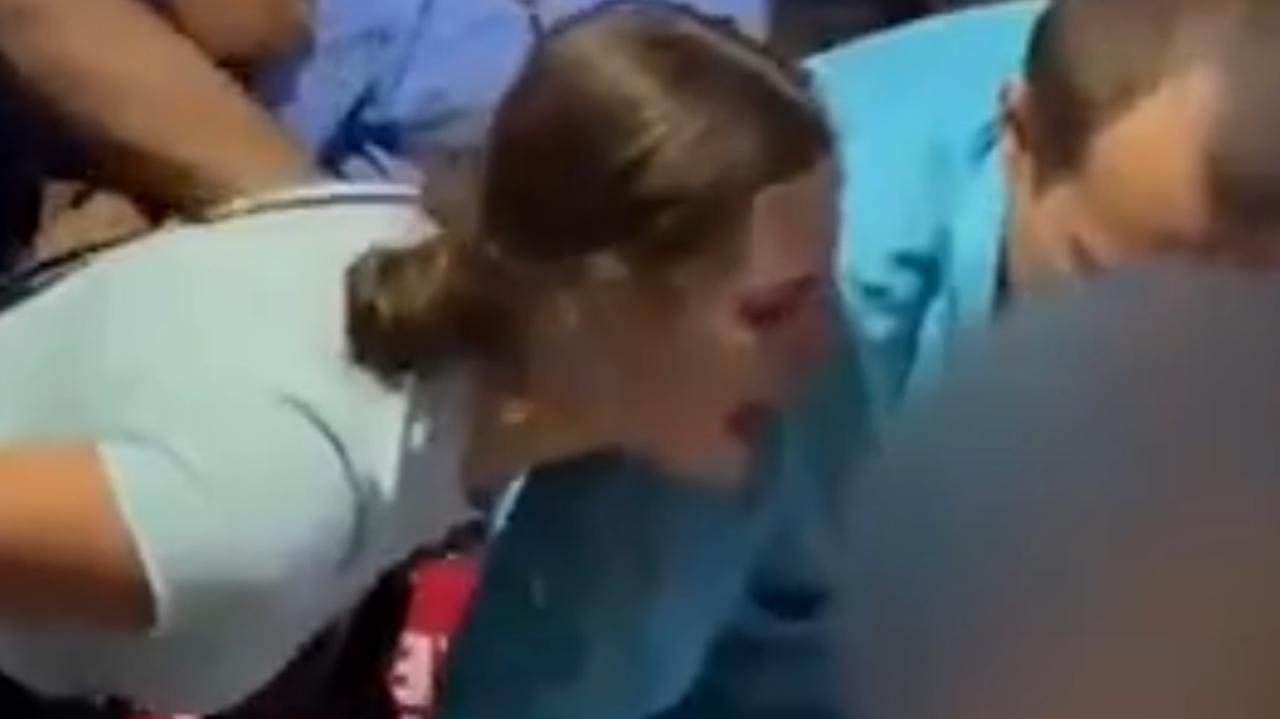Russia ‘throwing all its power’ at Severodonetsk: Ukraine governor
Ukraine has said Russia is using total force to control the Donbas region but the invading troops are being pushed back, according to reports.
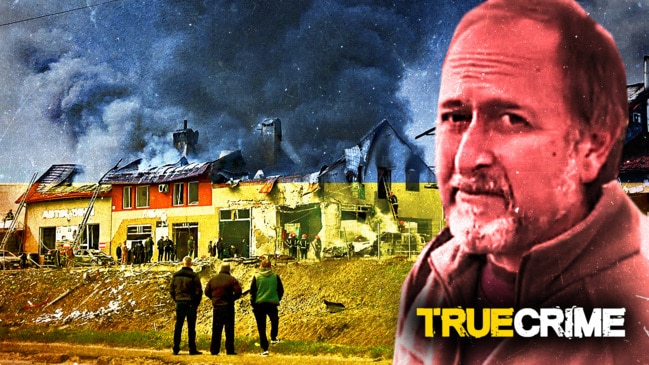
World
Don't miss out on the headlines from World. Followed categories will be added to My News.
Ukraine said on Saturday its forces were managing to push back against Russian troops in fierce fighting in Severodonetsk despite Russia “throwing all its power” into capturing the strategic eastern city.
Lugansk regional governor Sergiy Gaiday said in an interview posted on his official social media that the invading forces had captured most of the city “but now our military have moved them”.
“The Russian army, as we understand, is throwing all its power, all its reserves in this direction,” said Mr Gaiday, who on Friday claimed that Ukrainian troops had won back a fifth of the city.
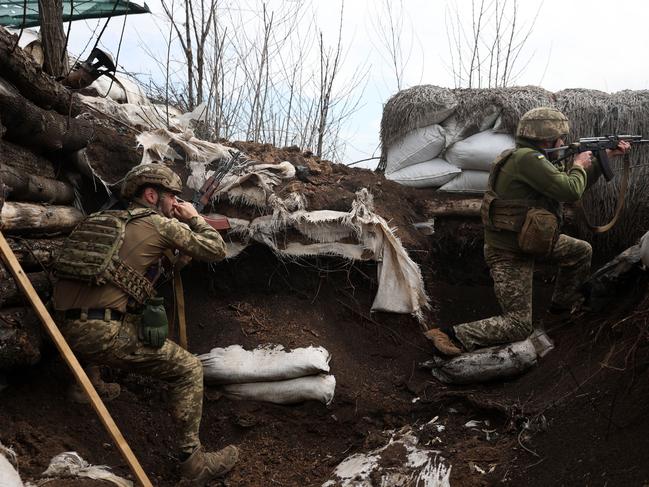
Severodonetsk is the largest city still in Ukrainian hands in the Lugansk region, where Russian forces have been making gradual advances in recent weeks.
Thousands of people have been killed, millions sent fleeing and towns turned into rubble since President Vladimir Putin ordered Russian troops into Ukraine 101 days ago.
The advance of Russian forces has been slowed by stiff Ukrainian resistance, repelling them from around the capital Kyiv and forcing Moscow to focus on capturing the east.
About 60 per cent of infrastructure and housing had been destroyed, while internet, mobile networks and gas services had been knocked out, said its mayor Oleksandr Zaika.
In the city of Sloviansk, about 80 kilometres from Severodonetsk, the mayor has urged residents to evacuate in the face of intense bombardment, with water and electricity cut off.
Ukraine also reported two victims from a missile strike on the port of Odessa in the southwest, without specifying if they were dead or injured.

Russia’s defence ministry said it had struck a “deployment point for foreign mercenaries” in the village of Dachne in the Odessa region.
It also claimed a missile strike in the northeastern Sumy region in a place where it said Ukrainian soldiers were receiving training from foreign instructors on using howitzers.
Russian troops now occupy a fifth of Ukraine’s territory and Moscow has imposed a blockade on its Black Sea ports.
Ukraine announced Saturday the deaths of four foreign military volunteers fighting Russian forces, whose invasion has spurred a wave of solidarity abroad including from experienced combat veterans.
The International Legion of Defence of Ukraine, an official volunteer brigade, announced the men from Germany, the Netherlands, Australia and France had died but did not specify when or under what circumstances.

“We lost our brothers in combat but their bravery, their memory and legacy will forever inspire us,” it said in a statement.
The Australian, Michael Charles O’Neill, 47, was reported killed in May and his death was confirmed by a foreign affairs department spokesperson.
A tribute on Facebook said he was “driving the wounded and injured from the front line”.
Paris on Friday confirmed that a French volunteer fighter had been killed in combat in
Ukraine President Volodymyr Zelensky announced the formation of the force at the start of the war and Kyiv shortly afterwards said it had received some 20,000 applications.
Russia claimed this week to have killed “hundreds” of foreign fighters in Ukraine since its invasion began on February 24 and stemmed the flow of newcomers.
Mr Zelensky said on Friday his country’s military would fend off the Russian invasion, in a video marking 100 days of Moscow’s all-out assault on its pro-democracy neighbour.
“Victory will be ours,” Zelensky said in the video.
It included Prime Minister Denys Shmyhal and presidential advisor Mykhaylo Podolyak, recalling an impromptu message they posted outside government buildings at the onset of the war, vowing to remain in the country.
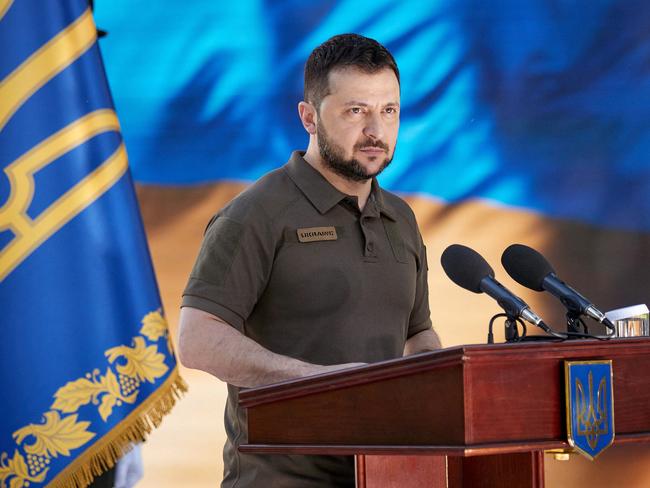
On the 100th day of Russia’s invasion, fighting is raging across the east, where Moscow’s forces are tightening their grip on Ukraine’s Donbas region.
Kyiv earlier had announced Moscow was in control of a fifth of Ukrainian territory, including Crimea and parts of Donbas seized in 2014.
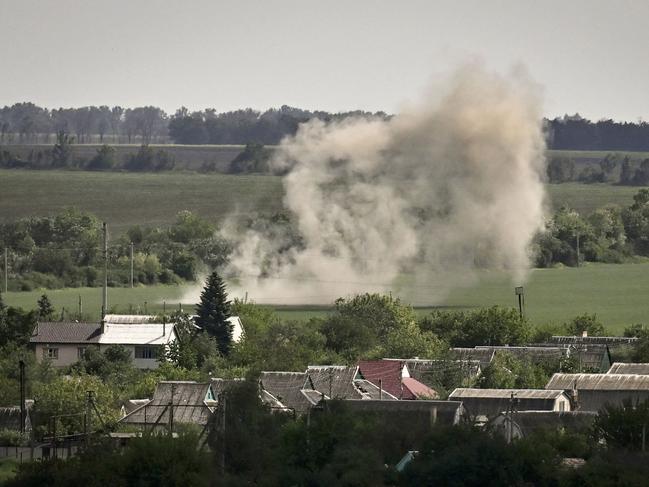
Former boxer Volodymyr Klitschko, brother of Kyiv mayor Vitali Klitschko, said Friday that Ukrainians “don’t want another 100 days of war” and called for continued “pressure on Putin’s regime”, referring to Russian President Vladimir Putin.

“Yes, we need weapons so that we can defend our common values. But we must wage war on the Russian economy so that Russia will finally leave Ukraine in peace,” Volodymyr Klitschko said.
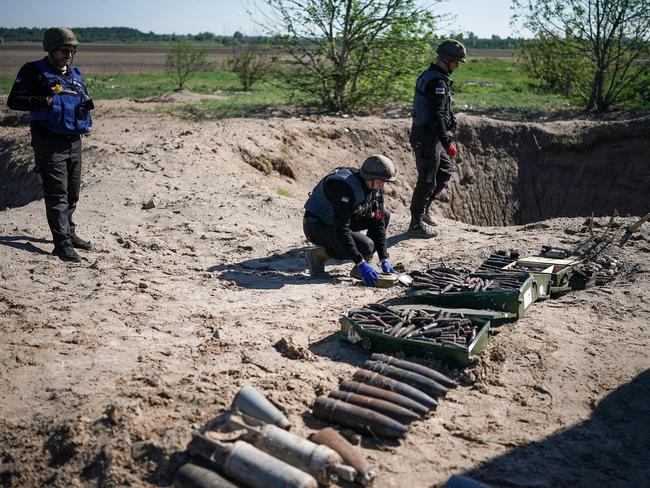
“We must economically isolate Russia from the world.”
Ukraine’s foreign ministry released a statement in English saying international help for the country was “the best investment in peace and sustainable development of all mankind”.
The ministry also called for a special court to investigate war crimes in the country, saying: “Russian criminals should be brought before the Tibunal in the same way as it was with the leadership of Nazi Germany.”
Mr Shmyhal earlier said the war was pushing his country closer to Europe while Russia was moving towards “isolation from the developed world”.
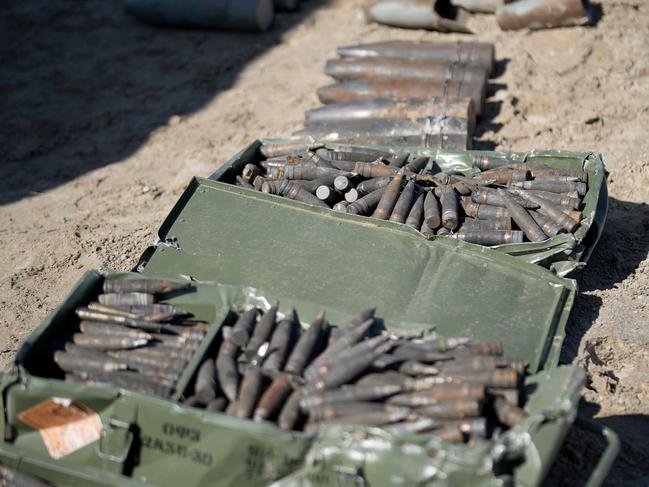
100 DAYS OF BOMBS: UKRAINE KIDS’ NIGHTMARE REALITY
As the children playfully push and shove each other on entering class, their teacher announces what they will be doing that day.
There is to be reading and math reciting, a bit of drawing and finishing making origami birds that will be hung around the room, she says as they settle into their small chairs.
A teacher’s aid walks about with old jam jars stuffed with half blunt pencils and textas to put on the shared tables.
There is little wrong with this scene except this is Ukraine, the ‘school’ is now a bunker two storeys below their actual school building with the only natural light coming from a ventilation window high above their heads.
It is not only a picture being repeated across towns and cities across the embattled country but is now sadly considered the norm to both students and teachers.

“We are just trying to keep things normal, how it was before,” teacher Elena tells News Corp as she moves into the dirt floored bunker in Ukraine’s west which she asks not be named.
By before, she means before Russia invaded the country on February 24 with the worst conflict in Europe since World War 2, that this week has clocked 100 days.
That is 100 days of a daily barrage of bombs, the death of tens of thousands of ordinary Ukrainian citizens and the largest and most rapid exodus of people from a country since the Second World War.
Such is the fluidity of displacement, hard figures are difficult to come by but best estimates has more than 6.7 million people fleeing their homes.
Russian President Vladimir Putin had a strategy to conquer the country in under a month with more than 200,000 troops prepped on the border of their neighbour for weeks backed by columns of tanks and armoured vehicles towing devastating artillery.
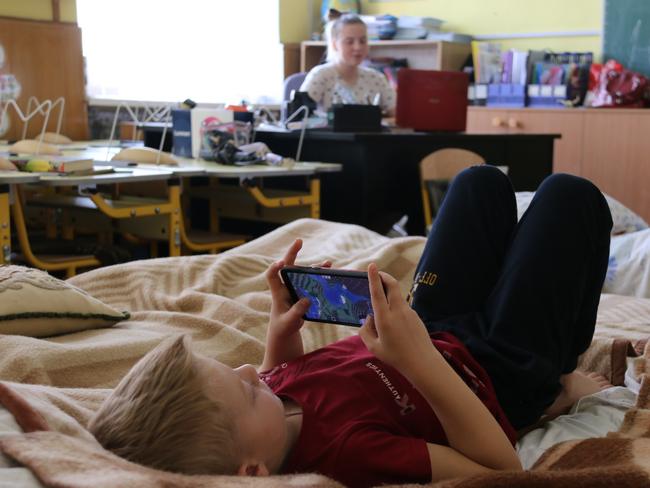
But 100 days on and there is no sign of war ending anytime soon.
“The steamroller is indeed advancing, if laboriously,” said Mathieu Boulegue of prominent British military think-tank Chatham House. “This isn’t a military conquest of the kind Russia might have hoped for. In the coming weeks, Moscow will be forced to switch from a war of movement to fighting from fixed positions,” he predicted. It hasn’t renewed its equipment, its forces are exhausted. The positions will soon freeze in place.”
Russian has been withdrawing ground level forces from most of the country to concentrate on pommeling the eastern Donbas flank but as a reminder, it still continues to fire rockets and drop bombs over other cities. Several times in the last month air raid sirens have rung out in the entire country alerting to incoming ordinance.

For its part, the US and Germany have marked the 100 days pledging to equip Ukraine with the most advanced weapons its armed forces have sought, namely anti-aircraft missiles and medium-range rocket systems. They were provided on the proviso they not be fired into Russia but the Kremlin none-the-less branded the move as “pouring fuel on the fire”.
Andriy Yermak, the head of the Ukrainian president Volodymyr Zelensky’s office, said: “I’m sure that if we receive all the necessary weapons and strengthen the efficient sanctions regime we will win.”
But the price is high.
As the Russian troops have been withdrawing from Ukraine to focus of Luhansk and Donetsk in the east, locals find so many examples of war crimes, not least of all mass graves of mostly innocent unarmed citizens many of whom were attempting to flee. In Mariupol, one mass grave alone is expected to yield 9000 bodies.
This week the Ukraine government said 600 Russians had been identified as potential war crime suspects with prosecution of 80 of them already underway.
Ukraine, Ukrainian claims 30,500 Russian troops have been killed since the start of the war and will only admit to 11,000 of its troops dead although President Zelensky said last week as many as 100 servicemen might be dying every day in the brutal fighting in the Donbas region.
But it is the women and children left behind whose suffering goes on.
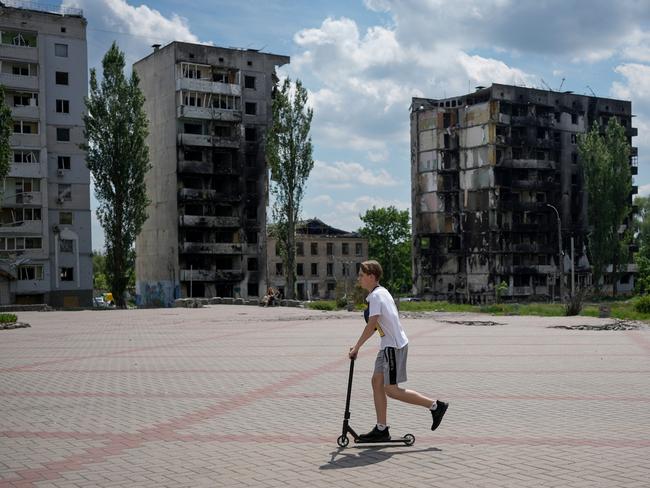
According to UNICEF, three million children inside Ukraine and more than 2.2 million children in refugee-hosting countries notably Poland are now in need of humanitarian assistance.
That is almost two out of every three children have been displaced by fighting. Also since Russia’s invasion at least 262 children have been killed, 415 injured but both official figures were suspected to be significantly higher.
“Without an urgent ceasefire and negotiated peace, children will continue to suffer and fallout from the war will impact vulnerable children around the world,” UNICEF Executive Director Catherine Russell said.
Speaking from the Lowy Institute, analyst Ian Hill said it was a war of attrition now and so far while Russia has little to show, it is far from beaten. But he said a vulnerable humiliated Putin could prove even more dangerous particularly as the economic cost of his country – crippled by sanctions – takes its toll.
“There is a real risk, moreover, that whatever compromises prove necessary to reach a negotiated end to the fighting will leave one or both sides aggrieved, resentfully awaiting an opportunity to redress matters,” he wrote this week in Lowy’s daily The Interpreter forum.
Kimberley Gardiner from Save the Children Australia has swapped her home in Melbourne for Dnipro in Ukraine’s east and in the past month has travelled to Kyiv, Kramatorsk, Chernivtsi, Zaporizhzhia and Kharkiv which while reconquered by Ukraine forces is again now being shelled by Russian artillery.
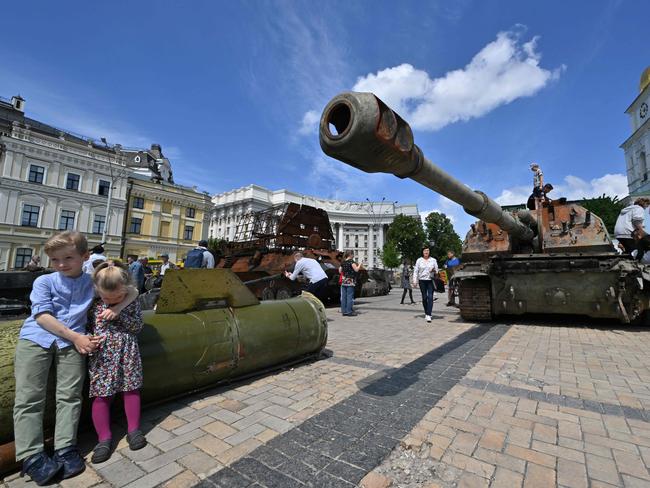
She said at least 1888 schools had been damaged and destroyed by shelling and bombing since the conflict began 100 days ago, more than double the number of such attacks recorded in eastern Ukraine from eight years of conflict from 2014.
Officially all schools in Ukraine remain closed but some are working ad hoc if for nothing else to keep children with their mates and offer a degree of normalcy and their mothers some respite. Anyway, many of the schools are being used as accommodation by locals whose homes have been destroyed.
Ms Gardiner has documented the stories of some of the families like 13-year-old Mariia (Mariia) who with her family including six-year-old brother Mykyta and cat has been living in a classroom and sharing bathrooms with 60 other people in a school in Chernivtsi, western Ukraine, since April.
Save the Children has been providing them with cash and basic necessities as well as education kits.
“Physically, I feel okay, but emotionally it’s been difficult,” said Mariia. “However, I do hope we can go back home. And if not, we will settle here. I hope that all the people will be fine and have a peaceful sky.”
Originally published as Russia ‘throwing all its power’ at Severodonetsk: Ukraine governor




